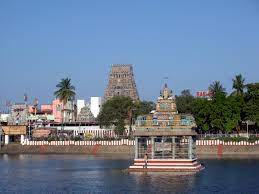Kapaleeshwarar Temple, Chennai: A Journey Through History, Spirituality, and Architectural Grandeur

Introduction
Nestled in the heart of Chennai, a bustling metropolis on the southeastern coast of India, lies a timeless gem of spiritual devotion and architectural brilliance—the Kapaleeshwarar Temple. This sacred sanctuary, dedicated to Lord Shiva in his form as Kapaleeshwarar, is not just a place of worship but a living testament to the city’s rich history, profound spirituality, and magnificent Dravidian architecture. In this article, we will embark on a captivating journey through the history, architectural marvels, religious significance, and cultural importance of the Kapaleeshwarar Temple in Chennai.
A Glimpse into the Past
The history of the Kapaleeshwarar Temple is deeply rooted in the annals of South Indian culture and spirituality. Legend has it that Goddess Parvati, while engaging in a playful argument with Lord Shiva, undertook a penance at this location. Impressed by her devotion, Lord Shiva appeared before her as Kapaleeshwarar, a form adorned with a “Kapala” or skull. This divine encounter gave birth to the temple’s name and significance.
The temple’s history can be traced back over a millennium, making it one of Chennai’s oldest and most revered religious edifices. It has witnessed the rise and fall of empires, the ebb and flow of cultures, and the enduring faith of countless devotees.
Architectural Marvels
The Kapaleeshwarar Temple stands as a magnificent example of Dravidian architecture, characterized by its distinctive features that include intricate carvings, towering gopurams (temple towers), and meticulously crafted sculptures. Key architectural elements of this divine abode include:
- Gopurams: The temple boasts a monumental gopuram at its entrance, adorned with exquisite carvings depicting various deities, celestial beings, and mythological narratives. These gopurams serve as gateways to the divine, inviting pilgrims into the sacred realm.
- Pillared Halls: The temple’s interior features expansive pillared halls adorned with intricate carvings that narrate stories from Hindu mythology. These halls are not only places of worship but also venues for cultural and spiritual gatherings.
- Tank and Mandapam: The temple complex includes a sacred tank known as the “Kapali Theertham” and a mandapam (hall) where devotees gather for various rituals and celebrations. The presence of the tank adds to the temple’s serene ambiance and cultural significance.
- Vimanas: The sanctum sanctorum of the Kapaleeshwarar Temple is adorned with towering vimanas (pyramidal tower-like structures) that are a testament to the temple’s architectural splendor. These vimanas are adorned with colorful stucco figures and paintings.
Religious Significance
The Kapaleeshwarar Temple holds profound religious significance for Hindus, particularly devotees of Lord Shiva. The presiding deity, Lord Kapaleeshwarar, is worshipped with great devotion. The temple also enshrines Goddess Karpagambal, the divine consort of Lord Kapaleeshwarar. Devotees flock to the temple to seek blessings for various aspects of life, including health, prosperity, and spiritual enlightenment.
The temple’s festivals, including the Arupathimoovar Festival, Panguni Uthiram, and Masi Magam, draw large crowds and are marked by vibrant processions, music, and rituals.
Cultural and Historical Legacy
Beyond its religious significance, the Kapaleeshwarar Temple plays a pivotal role in Chennai’s cultural and historical narrative. It stands as a symbol of the city’s rich heritage, a testament to the enduring traditions of South India, and a testament to the synthesis of various cultural influences that have shaped the region over centuries.
Preservation and Conservation
The preservation of the Kapaleeshwarar Temple is a collaborative effort between religious authorities and heritage conservationists. Ongoing restoration and maintenance work ensure that the temple’s architectural grandeur and spiritual sanctity are preserved for generations to come.
Conclusion
The Kapaleeshwarar Temple, Chennai’s spiritual and architectural treasure, is more than just a place of worship; it is a journey through history, spirituality, and cultural richness. It stands as a testament to the enduring faith of its devotees, the grandeur of Dravidian architecture, and the vibrant traditions of South India.
Visiting this divine sanctuary is not just a physical pilgrimage; it is an exploration of the soul, a connection to centuries of tradition, and a testament to the enduring allure of spirituality amidst the bustling rhythms of urban life. The Kapaleeshwarar Temple continues to be a timeless beacon of devotion, culture, and history in the heart of Chennai, welcoming all who seek solace, enlightenment, and divine blessings.



